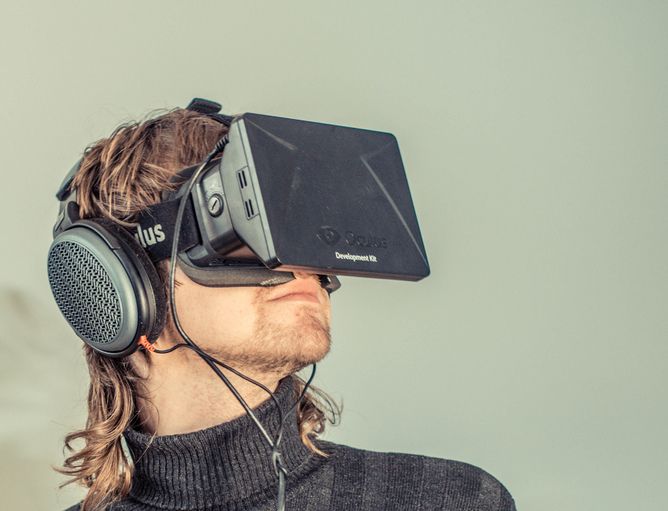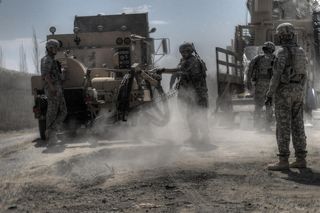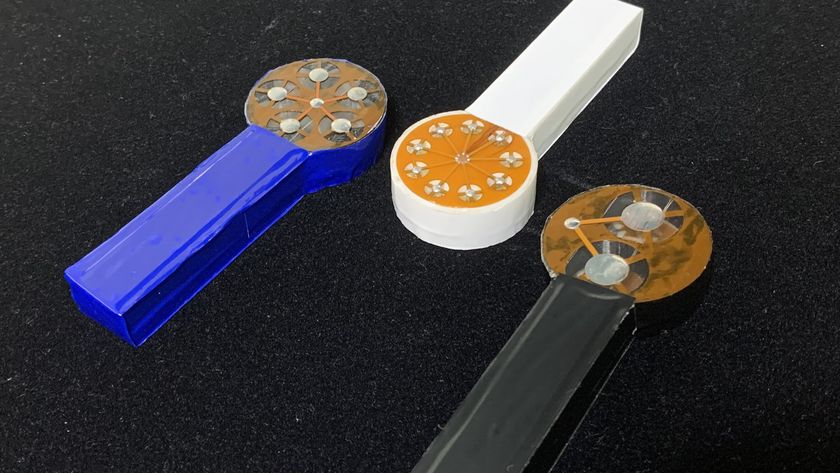
Virtual Reality Can Make You Forget Pain

This article was originally published on The Conversation. The publication contributed this article to Live Science's Expert Voices: Op-Ed & Insights.
A couple of weeks from now I will be in hospital undergoing a knee replacement. It will be the most extreme surgery I’ve ever experienced and I’m pretty scared. I’ve been told that I can expect to endure excruciating pain afterwards but I won’t be allowed to lie in bed feeling sorry for myself. In order to ensure a good recovery I have to get up and exercise the new joint numerous times a day. Make no mistake, this is going to hurt.
It may not be too long, however, until patients like me will be able to ward off their agonies simply by playing virtual reality games. This surprising advance is already being tested, but the premise behind it is not new.
As neuroscientist David Linden recently explained on NPR, the brain has more control over pain than we might at first imagine. It can say “hey that’s interesting, turn up the volume on this pain information that’s coming in”, or it can say “turn down the volume on that and pay less attention to it”. In Linden’s book Touch: The Science of Hand, Heart, and Mind, he discusses how our perception of pain relies on the brain and how it processes information coming from the nervous system.
Lieutenant Sam Brown
Researchers are now attempting to see if this process can be manipulated through gaming. In the US, a group of patients suffering from severe burns were invited to play SnowWorld, a virtual reality computer game devised by two cognitive psychologists, Hunter Hoffman and Dave Patterson, to persuade the brain to ignore pain signals in favour of more compelling scenarios. Their motivation, Hoffman said was because opioids (morphine and morphine-related chemicals) can control burn pain when the patient is at rest, they are nowhere near adequate to quench the agony of daily bandage changes, wound cleaning and staple removals.
The best-known SnowWorld player is lieutenant Sam Brown who, during his first tour of duty in Kandahar, Afghanistan, in 2008, suffered third degree burns over 30% of his body. An IED buried in a road hit the vehicle he was travelling in and exploded into a fireball, engulfing Brown in flames. His injuries were so severe he had to be kept in a medically induced coma for several weeks. Back in the US, Brown endured more than two dozen painful surgeries, but none were as bad as the daily ritual of caring for his wounds. When nurses attended to his burns and helped him perform the necessary physical therapies, he experienced the most excruciating pain.
In 2012, NBC News reported on Brown’s experience and how the pain of dressing burn wounds could be so intense it could make patients relive the original trauma. In Brown’s case the procedures were so unbearable that on some occasions his superior officers had to order him to undergo treatment.
Sign up for the Live Science daily newsletter now
Get the world’s most fascinating discoveries delivered straight to your inbox.
For Brown, help arrived not in the form of new kinds of medicines or dressings, but by a video game. Brown was one of the first participants in SnowWorld’s pilot study, which was designed in conjunction with the US military, to test whether it really could help wounded soldiers.

A distracting annoyance
At the time, Hoffman’s main work at the University of Washington was using virtual reality techniques to help people overcome a pathological fear of spiders. Patterson, based at the Harborview Burn Centre in Seattle, is an expert in psychological techniques such as hypnosis that can be used to help burn patients.
It was already known that the way we experience pain can be psychologically manipulated – for example, anticipating pain can make it worse. Research looking at how soldiers experience pain has also revealed how emotions can affect how that pain feels. So if your brain can interpret pain signals differently depending on what you’re thinking or feeling at the time, why not see if the experience of pain can be altered by deliberately diverting a patient’s attention towards something else? If it worked, the wound care could become more of a distracting annoyance and the distressing sensation of pain could be much reduced.
It was a long shot, but Hoffman’s expertise in virtual reality therapy made it possible to develop a game which offered that kind of diversion. To do this patients first put on a virtual reality headset and earphones and are then transported through an icy canyon filled with snowball hurling snowmen, flocks of squawking penguins, woolly mammoths and other surprises. Flying through the gently falling snow, they can then retaliate by throwing their own snowballs. Often, they get so involved with it that they don’t even notice when their procedure has finished.
In the interview with NBC Patterson explained how, during painful procedures like scrubbing off a wound, the patient is taken into a soothing and icy world, a completely different place from the reality. It works, he said, “for as long as people seem to be in the virtual world.”
The 2011 pilot study showed promising results. In some cases, soldiers with the worst pain reported that SnowWorld worked better than morphine. Brown himself is now much recovered, and attributes a large part of that success on his immersive experience.
Similar projects are happening elsewhere. In the UK, staff at Queen Elizabeth Hospital Birmingham and the University of Birmingham have been looking at how computer game technology can alleviate patients’ pain and discomfort through distraction therapy in which patients “wander around” a virtual world based on real locations in the Devon countryside. The idea is to combine authentic natural landscapes with virtual reality aids that help patients divert their attention from pain while also offering opportunities for real physical exercise – walking up hill, going over bridges, sitting on the beach – that creates movement inside the game.
As with SnowWorld, patients are generally injured military personnel. Most suffer from severe burns, but some also have phantom pain from amputated limbs.
Future applications
In the future, could virtual reality headsets like Oculus Rift provide convincing environments for pain relief and other medical applications? For example, for helping amputees learn to use new prosthetic limbs and treating PTSD. Research is also underway to discover whether virtual reality can be used to reduce chronic neck pain.
Social psychologist Brock Bastian is interested in the way pain affects us, and sees the phenomenon itself as a kind of virtual experience:
[Pain] is a kind of shortcut to mindfulness: it makes us suddenly aware of everything in the environment. It brutally draws us into a virtual sensory awareness of the world, much like meditation.
Pain is in the zeitgeist. In her new film, Cake, Jennifer Aniston portrays a woman tormented by fibromyalgia, a condition that causes chronic pain, following a devastating car accident. For her, however, it seems that relief might finally come not from escaping reality, but from embracing it.
Luckily for me, the pain of knee replacement is said to be severe but short-lived. Nevertheless, I plan to dust off my PS3 and experiment with one or two distracting computer games. We’ll see how that goes.
This article was originally published on The Conversation. Read the original article. Follow all of the Expert Voices issues and debates — and become part of the discussion — on Facebook, Twitter and Google +. The views expressed are those of the author and do not necessarily reflect the views of the publisher. This version of the article was originally published on Live Science.












